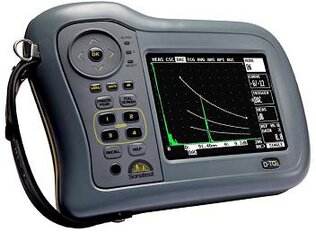The Sonatest heritage in product design and Sitescan name has
always assured the technician of robust instrument construction
combined with exceptional performance. The Sitescan series
carries the baton of all these desirable features, but now, thanks
to innovative internal redesign, new features can be added and
upgrades performed in the working environment, reducing down-
time and increasing working flexibility. High levels of near surface
resolution, penetrating power and excellent signal to noise ratio
are key functions in the Sitescan range. Typical applications are
Weld Fabrication, Corrosion Detection, Forgings & Castings and
general UT inspection.
Sitescan Series Features
• Customizable & Intuitive Menus
• Split DAC/AVG
• Angle Measurement Mode.
• Configurable on-board software.
• Field Upgradable.
• Encoded B-Scan
• A-Scan Fade.
• 4GByte on-board memory.
• USB Interface for PC import/export.
• Video Output for training.

High Visibility Display
For any flaw detector the display is a crucial element. The Sitescan series has a color transflective VGA display, providing high visibility in any lighting
conditions. Maximum readability is achieved through adjustable brightness and the choice of 9 color palettes, including a black-on-white LCD
emulation mode. Simplicity reigns with the enhanced user interface and a full screen A-scan display is available at the touch of a button, so that every
detail of the A-scan can be easily seen.
3Rs – Reliable, Rugged & Robust
The ability to perform in harsh environments with proven reliability is an important aspect of flaw detector ownership. Maximum operational time
is promoted by outstanding battery performance, up to 16 hours from full charge for Sitescan and 12 hours for D-50. The Sitescan’s enclosure is constructed
using automotive grade impact resistant materials and is designed to meet IP67 standards, offering excellent water resistance. Explosive Testing MIL810-G standards have been passed, together with environmental testing which has confirmed the instrument fully functioning at temperatures above 55 o C